You are here
Reference and Data Products Handbooks
NASA's Earth Observing System provides a variety of materials available for download. Feel free to choose a category below:
- Brochures
- Postcards
- Posters
- Science Writers’ Guide
- Mission Brochures
- Fact Sheets
- Calendars
- Booklets
- Lithographs
- Reference and Data Products Handbooks
- iBooks
- Activities
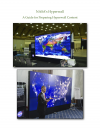 |
A Guide for Preparing Hyperwall Content If you are a NASA affiliate and need to prepare content for the hyperwall, will be using the hyperwall to deliver a presentation, and/or want to learn more about designing hyperwall layouts, please refer to this guide and discover an easy way to design your hyperwall layout. This publication appears in: |
 |
Hyperwall Design Template (Keynote) A fairly easy way to design your hyperwall layout(s) is to download this Keynote design template, mentioned in NASA’s Hyperwall: A Guide for Preparing Hyperwall Content. This template has been set up to display a grid that represents the individual videos screens using a 16 by 9 page size. This publication appears in: |
 |
Hyperwall Design Template (PowerPoint) A fairly easy way to design your hyperwall layout(s) is to download this PowerPoint design template, mentioned in NASA’s Hyperwall: A Guide for Preparing Hyperwall Content. This template has been set up to display a grid that represents the individual videos screens using a 16 by 9 page size. This publication appears in: |
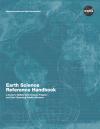 |
2006 Earth Science Reference Handbook Revised May 2006: The Earth Science Reference Handbook provides a guide to the satellite missions and other elements of NASA's Earth science program. This volume updates the 1999 EOS Reference Handbook, now that the major missions of the Earth Observing System (EOS) have been launched and are transmitting data, and broadens the coverage to include not just EOS but also additional NASA Earth science missions. This publication appears in: |
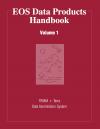 |
EOS Data Products Handbook Volume 1 (Revised 2004) Revised January 2004: This is a "living" document in that the web version is being updated periodically. It is designed to provide you with information about the products available through the EOSDIS system in the TRMM and Terra (formerly AM-1) timeframes. If you already know the product name, it may be found in the summary List of Products beginning on page ix by either the Product ID or the Data Set Name. Both the Product ID and the Data Set Name will direct you to the page number on which you will find the corresponding Product Description and other information. If you are beginning your research into what products are available through the Earth-Sun System Mission (formerly the Earth Science Enterprise), you may choose to investigate the twelve science chapters in this document beginning with the Radiance and Imagery products. Data sets are grouped by these classifications, which are derived from the 24 EOS critical science measurements. Each category provides a framework for understanding the science objectives as well as providing a thumbnail sketch of what the product is designed to do. Investigators may also cross-reference products by their source instrument and archive. That information, as well as page numbers, is provided in the List of Products. This document also contains information about the EOSDIS Distributed Active Archive Centers (DAACs) and the EOS instrument teams. Access information about the DAACs is contained in Chapter Two. Information about the TRMM and Terra instrument teams is contained in Chapter Three. This publication appears in: |
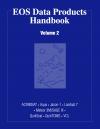 |
EOS Data Products Handbook Volume 2 (2000) The EOS Data Products Handbook provides brief descriptions of the data products that are being produced from a range of missions of the Earth Observing System (EOS) and associated projects. Volume 1, originally published in 1997, covers the Tropical Rainfall Measuring Mission (TRMM), the Terra mission, and the Data Assimilation System, while Volume 2 covers the Active Cavity Radiometer Irradiance Monitor Satellite (ACRIMSAT), Aqua, Jason-1, Landsat 7, Meteor 3M/Stratospheric Aerosol and Gas Experiment III (SAGE III), the Quick Scatterometer (QuikScat), the Quick Total Ozone Mapping Spectrometer (QuikTOMS), and the Vegetation Canopy Lidar (VCL) missions. Volume 2 follows closely the format of Volume 1, providing a list of products and an introduction and overview descriptions of the instruments and data processing, all introductory to the core of the book which presents the individual data product descriptions, organized into 11 topical chapters. The product descriptions are followed by five appendices, which provide contact information for the EOS data centers that are archiving and distributing the data sets, contact information for the science points of contact for the data products, references, acronyms and abbreviations, and a data products index. This publication appears in: |
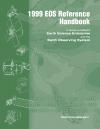 |
1999 Earth Science Reference Handbook The 1999 EOS Reference Handbook provides a historical guide to the satellite missions and other elements of NASA's Earth science program, known then as the Earth Science Enterprise. This publication appears in: |
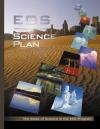 |
1999 EOS Science Plan (Revised) The Earth Observing System (EOS) Science Plan is the product of leading scientists around the world who are participating in NASA's EOS program. The purpose of the 1999 Plan was to state the concerns and problems facing Earth Science at that time, and to indicate contributions that would be made toward providing solutions to those problems, primarily through the use of satellite-based observations obtained with EOS satellites and instruments. Within this publication, the reader will find types and quality of data expected to be produced from the satellite observations from 1999 forward, how they were expected to improve over existing measurements, and how the data would be applied to solving the problems described. Seven "topical" chapters discuss the nature of the science being reviewed: radiation, clouds, water vapor, precipitation, and atmospheric circulation; ocean circulation, productivity, and exchange with the atmosphere; greenhouse gases and atmospheric chemistry; land ecosystems and hydrology; cryospheric systems; ozone and stratospheric chemistry; and volcanoes and climate effects of aerosols. In addition to the topical chapters, there is a chapter that broadly defines the scope of EOS science. This publication appears in: |
